Traveling with a cat might sound like an impossible feat to some. Images of frantic felines in carriers, howling through long car rides, may spring to mind. However, for those in the know, adventure cats are a real and wonderful thing. Just like my own cat, Josie, many cats possess the potential to become enthusiastic travel companions, enriching journeys in unexpected ways.
For the past year and a half, Josie, a former foster kitten, has been my co-pilot on countless road trips, covering thousands of miles. From cozy cabins to spacious RVs and even the occasional motel room, she has experienced a diverse range of landscapes – the fiery hues of red rock deserts, the serene beauty of mountain lakes, and the magical stillness of snow-covered terrains.
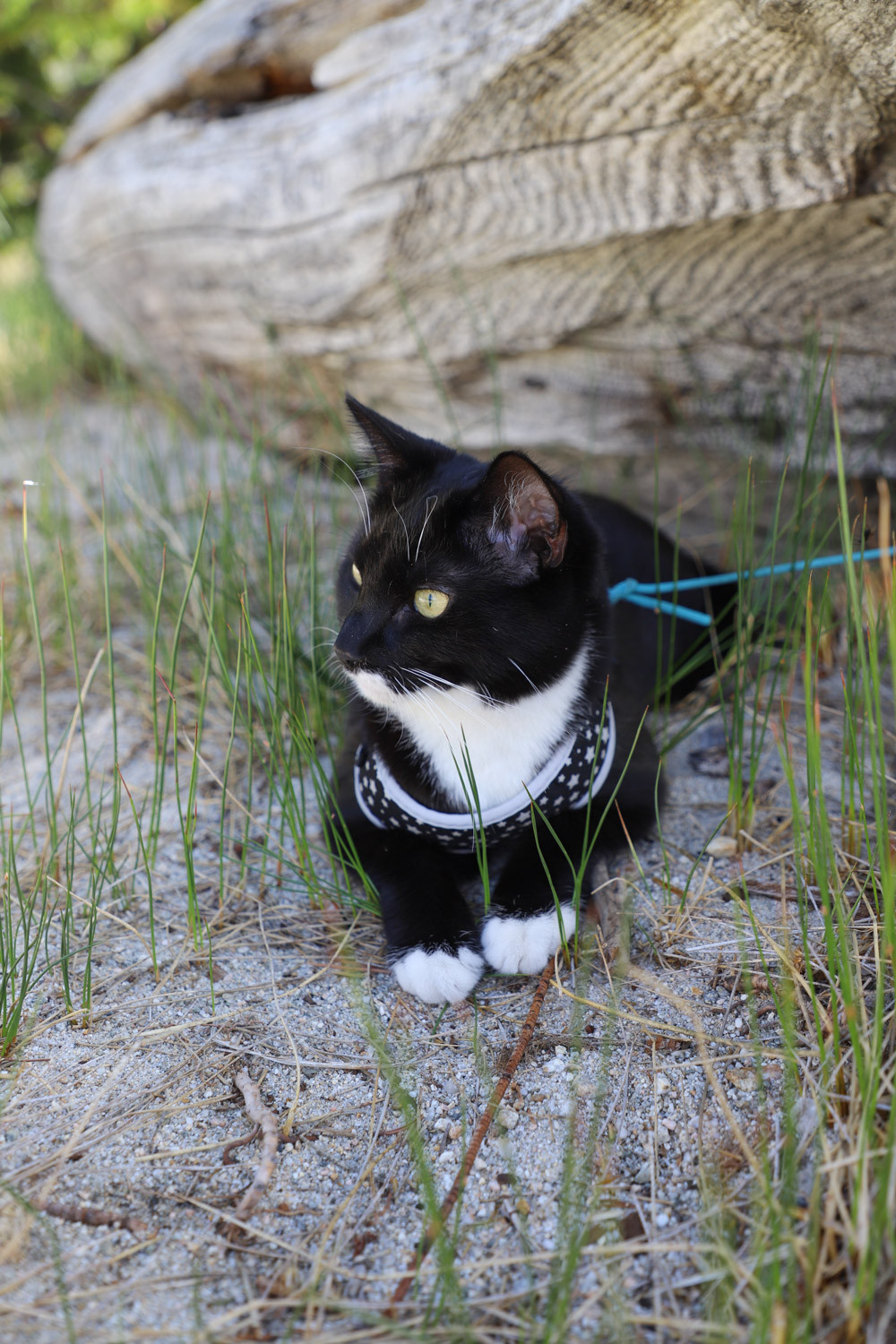 Josie the cat looking out of a car window during a road trip
Josie the cat looking out of a car window during a road trip
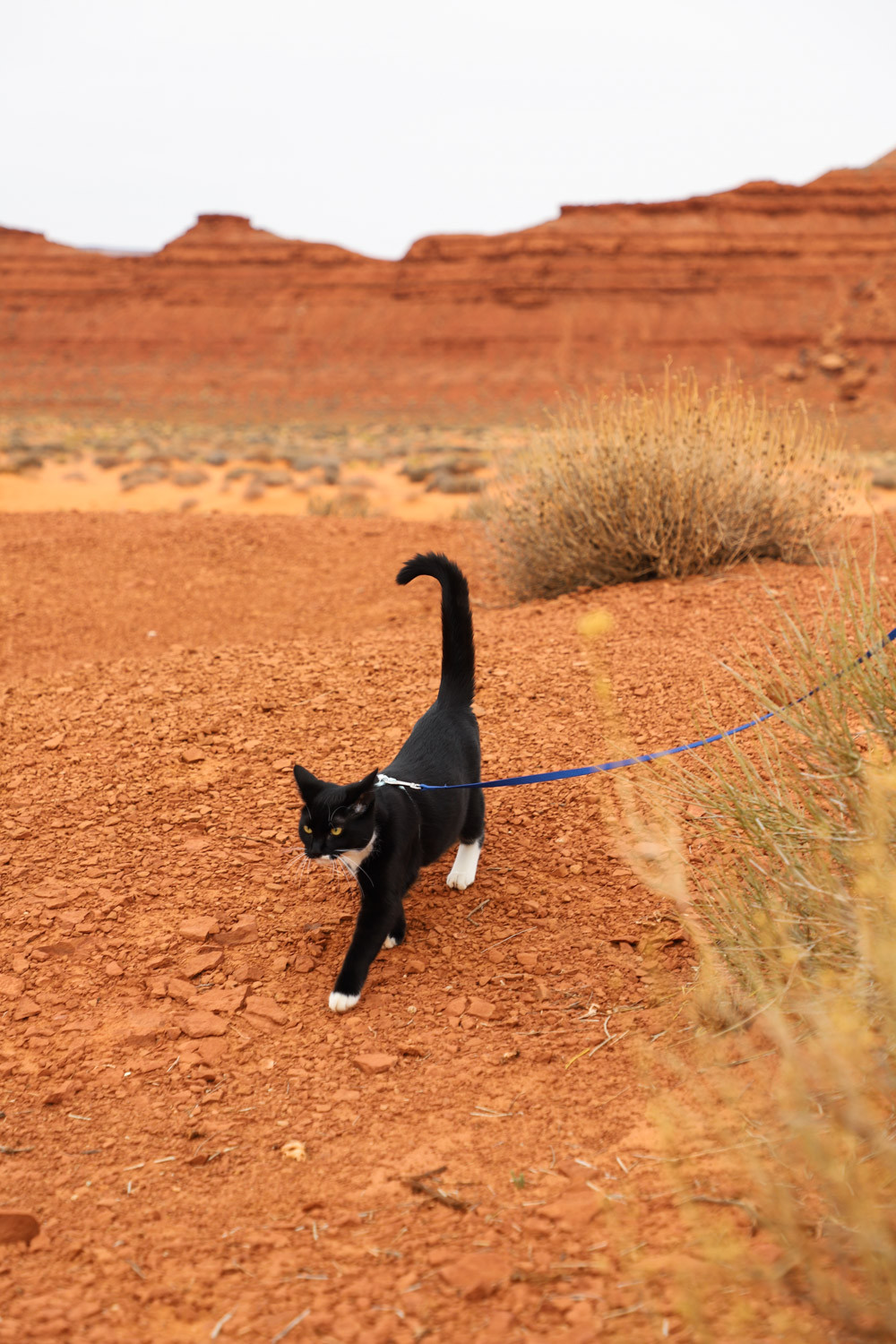 Josie the cat wearing a harness and leash exploring outdoors
Josie the cat wearing a harness and leash exploring outdoors
While the logistics of traveling with a cat can sometimes present extra hurdles, the rewards far outweigh the challenges. The unique perspective and companionship a feline friend offers are invaluable, a sentiment echoed by a growing community of adventure cat enthusiasts online.
Although cats weren’t historically bred for outdoor adventures like dogs, their inherent curiosity and relatively low-maintenance nature make them surprisingly adaptable travel partners. With the right approach to training, particularly leash training, and an understanding of their individual personalities, many cats are capable of transforming into exceptional travelers and even camping buddies. Based on my experiences with Josie, here are some key insights I’ve gained for successful and enjoyable travels with your feline companion, ensuring the best experience for both you and your cat.
Understanding Your Cat’s Personality: Is Your Cat Ready to Travel?
Before envisioning cross-country adventures with your furry friend, it’s crucial to honestly assess their personality. Not every cat is naturally inclined towards travel or outdoor exploration. Experts categorize cat personalities broadly, with some being better suited to an adventurous lifestyle than others.
When I chose Josie, I opted for a kitten with a well-socialized and friendly, yet moderately cautious, temperament. Her tuxedo cat markings, while not breed-specific, are often associated with a lively, energetic, easygoing, social, and intelligent nature – traits that seemed promising for an adventure cat. Tuxedo cats are sometimes even likened to dogs in their personalities, and Josie certainly fits this description, even enjoying games of fetch.
Building trust and understanding Josie’s signals was paramount once she settled into her new home. We embarked on training to gauge her receptiveness to leash walking and travel, ensuring she was genuinely comfortable and happy with the process. This initial assessment period is vital to determine if your cat has the right temperament for travel.
Gradual Introduction and Patience: The Keys to Leash Training Your Cat
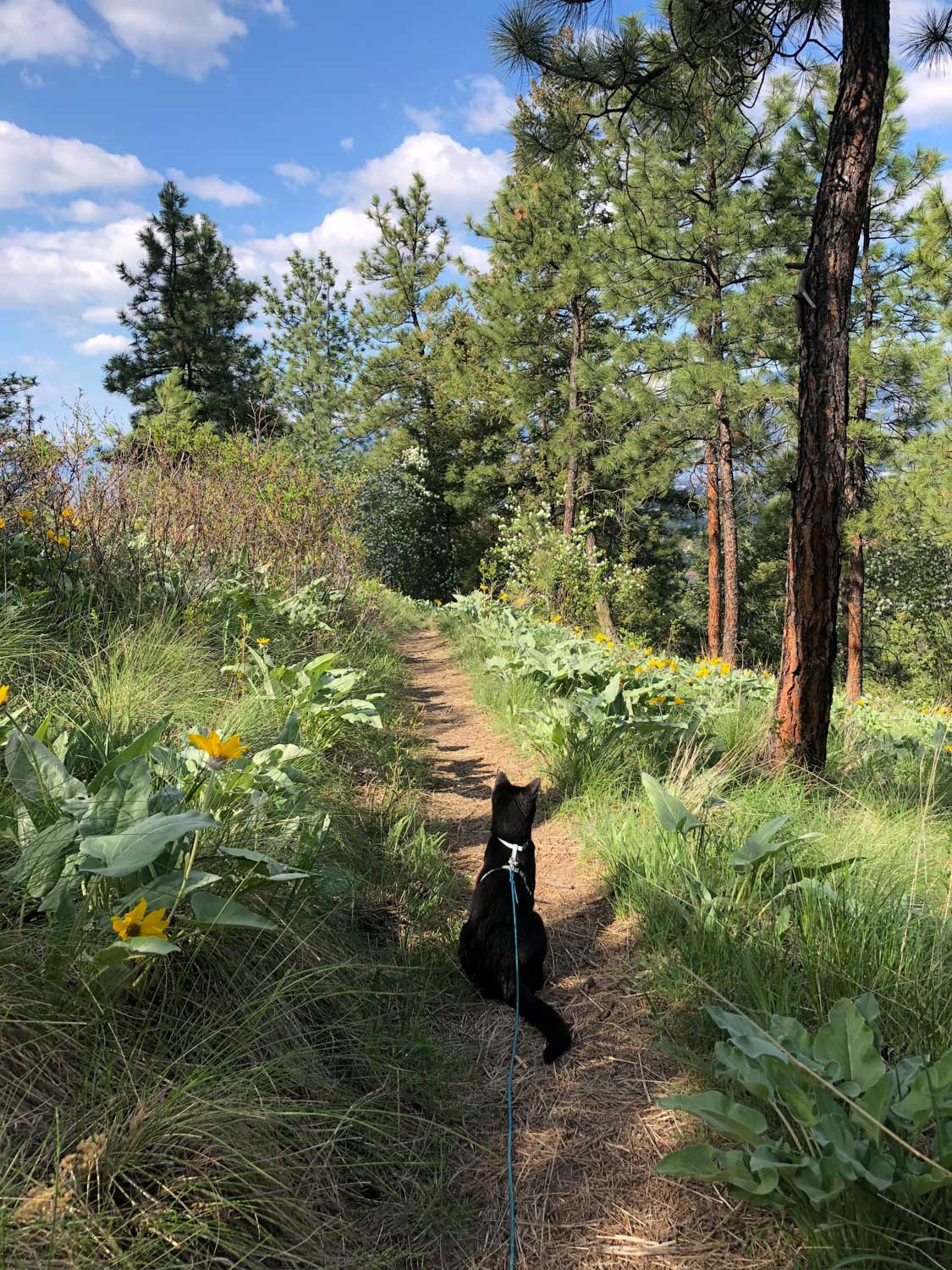 Josie the cat wearing a harness inside a house
Josie the cat wearing a harness inside a house
Leash training a cat and preparing them for extended travel, even short walks, requires patience and a gradual approach. It’s not an overnight transformation.
Start slowly and introduce the harness in a familiar and comfortable environment, like your living room. Don’t be surprised if your cat initially flops over or refuses to move. Positive reinforcement is key here – reward them with treats and praise for simply wearing the harness, even if it’s just for a few minutes at a time. Numerous online resources offer detailed cat leash training tips to guide you through this process.
It’s essential to remember that cats are not dogs. Their learning style and responses differ significantly. Patience and understanding are paramount. Be forgiving of setbacks and celebrate small victories. Love them for their unique feline nature and adjust your expectations accordingly.
Thinking your older cat is too set in their ways for training? Think again! While we started leash training Josie at a young age of eight weeks, her mother adapted well to leash training as an adult. Success hinges on a combination of innate personality and consistent, patient training, regardless of age.
Embrace Their Pace: Experiencing the World Through Your Cat’s Senses
Traveling with a cat necessitates a shift in pace and perspective. You won’t cover ground as quickly or efficiently as you would traveling solo or with a dog. However, this slower pace can be a gift, allowing you to appreciate your surroundings in a richer, more detailed way.
Pay attention to what captures your cat’s interest. Is Josie intently sniffing a particular branch? Consider what animal might have passed by and left its scent. Is she chattering at something in a tree? Take the time to identify the bird species that has caught her attention. Engaging with the world from your cat’s viewpoint can deepen your own experience and understanding of your surroundings.
If your cat becomes too slow or hesitant, be prepared to carry them for a while. This could be in your arms, or using a specialized cat backpack. While it’s important to be mindful of time constraints, try to embrace the slower rhythm and the unique insights your cat offers.
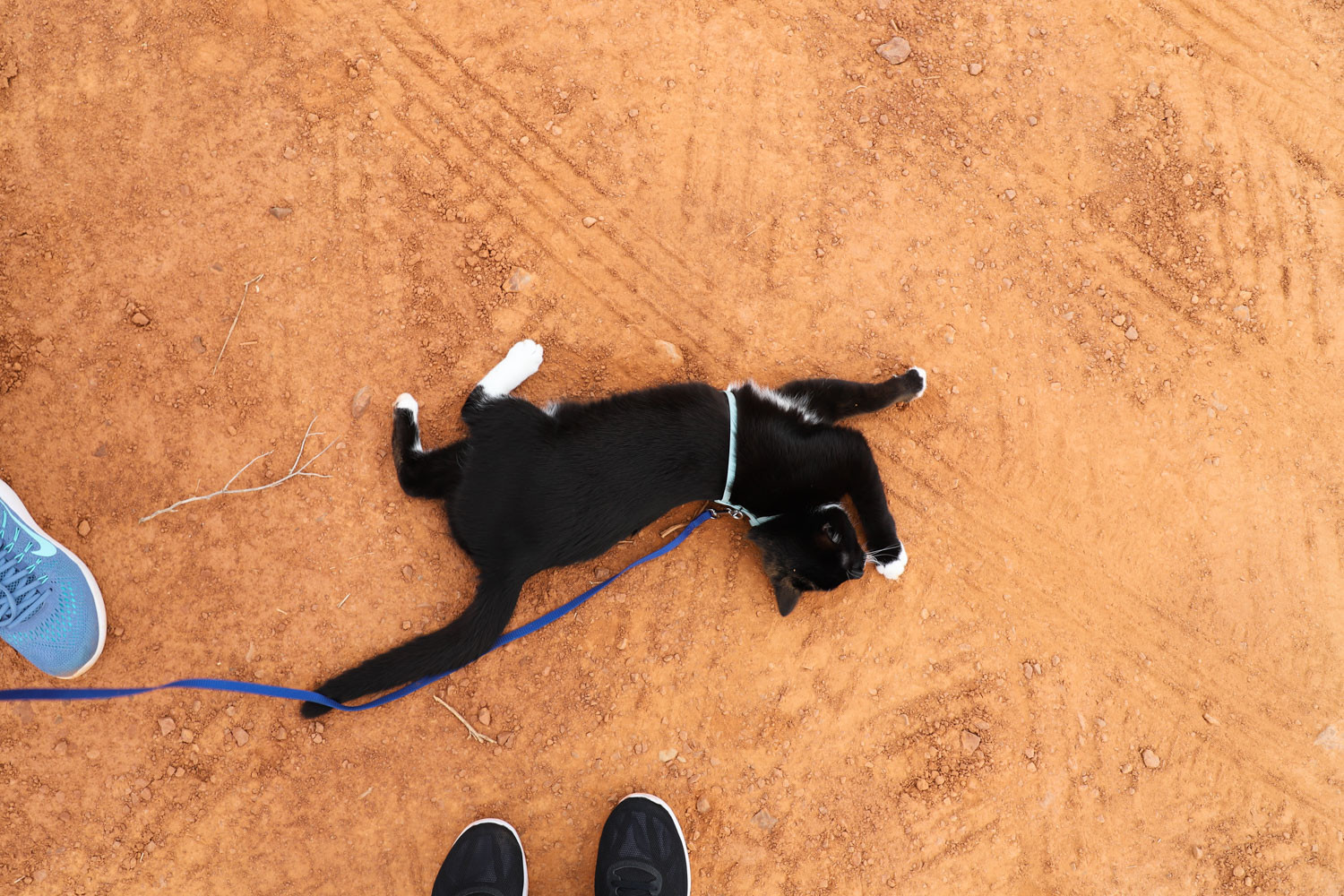 Josie the cat sniffing plants on a walk
Josie the cat sniffing plants on a walk
 Josie the cat being carried in a backpack
Josie the cat being carried in a backpack
 Josie the cat exploring a snowy landscape
Josie the cat exploring a snowy landscape
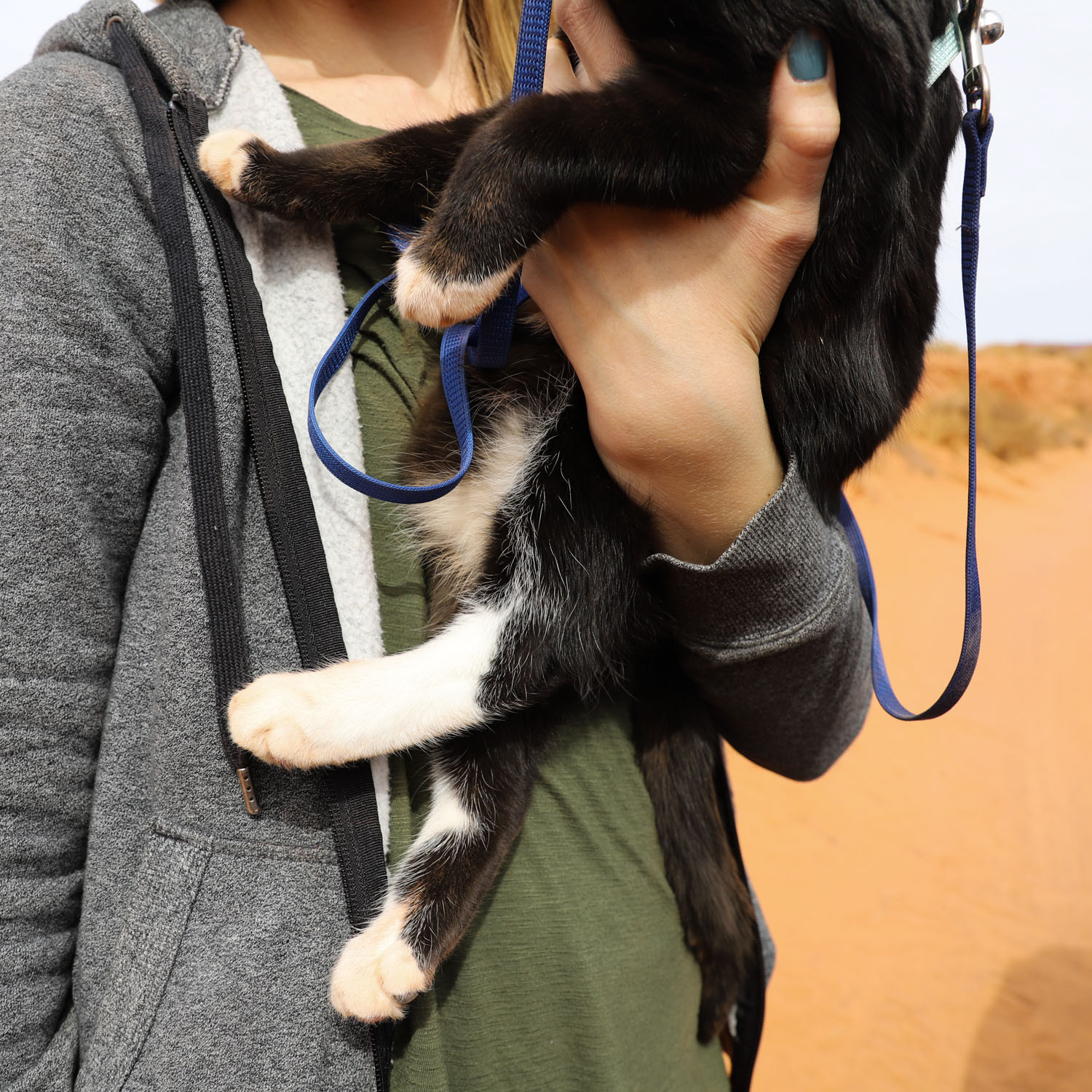 Josie the cat sitting on a rock looking around
Josie the cat sitting on a rock looking around
Josie, my travel cat, has taught me to slow down and be present in the moment. She embodies living in the “now,” captivated by the scents, textures, plants, creatures, and movements of each new place. Through her, I’ve become more attuned to subtle sounds and the diversity of birdlife. It’s a profoundly enriching way to experience the world – wordlessly, mindfully, and with heightened senses.
Creating a Secure Sanctuary: Your Cat’s Safe Space on the Road
Cats are inherently more territorial than nomadic. When traveling, providing a consistent and secure “safe space” is crucial for their comfort and well-being. This retreat becomes especially important when they feel stressed or scared. This safe haven could be their familiar cat carrier, the car itself, a designated spot in an RV, or even a comfortable cat backpack. Sometimes, simply holding them in your arms can provide reassurance, especially if you can offer some overhead cover to elevate them above perceived threats. Knowing they have a safe retreat significantly reduces stress, particularly when encountering unfamiliar animals or loud noises.
Mirroring Calm: Your Mood Influences Your Cat’s Demeanor
Cats are remarkably sensitive creatures and can readily pick up on your emotional state. If your cat exhibits increased stress while traveling or exploring, take a moment to assess your own mood. They might be mirroring your anxiety levels.
Conversely, this sensitivity works in your favor too. You can actively calm your cat by projecting a serene and relaxed demeanor. Practice deep breaths, speak to them in a soothing voice, offer gentle petting, and engage in other comforting behaviors they respond to. Your calm presence can be incredibly reassuring for your feline travel companion.
 Josie the cat relaxing in a cat carrier
Josie the cat relaxing in a cat carrier
 Josie the cat being petted by her owner outdoors
Josie the cat being petted by her owner outdoors
Travel Etiquette: Respect and Responsibility with Your Adventure Cat
Whether you’re exploring your local neighborhood or venturing into a national park with your cat, adhering to pet etiquette is paramount. Always abide by posted rules regarding pets. Keep your cat securely leashed, even in areas where dogs are permitted off-leash – this is especially important for their safety and to respect other visitors and wildlife.
Regardless of your location, practice pet courtesy. Remember that not everyone shares your affection for cats. Choose pet-friendly accommodations and be prepared for potential accidents. Always clean up after your cat and strictly adhere to Leave No Trace principles, ensuring you leave every place as pristine as you found it.
Regarding litter box logistics while traveling, we bring Josie’s familiar litter box from home. This established routine provides comfort and consistency. She reliably uses it and has only had one accident outside of it (in soft dirt in a backyard). Travel-specific litter boxes are available, including eco-friendly options. Some dedicated owners even toilet train their cats. Choose the method that best suits you and your cat’s needs and preferences.
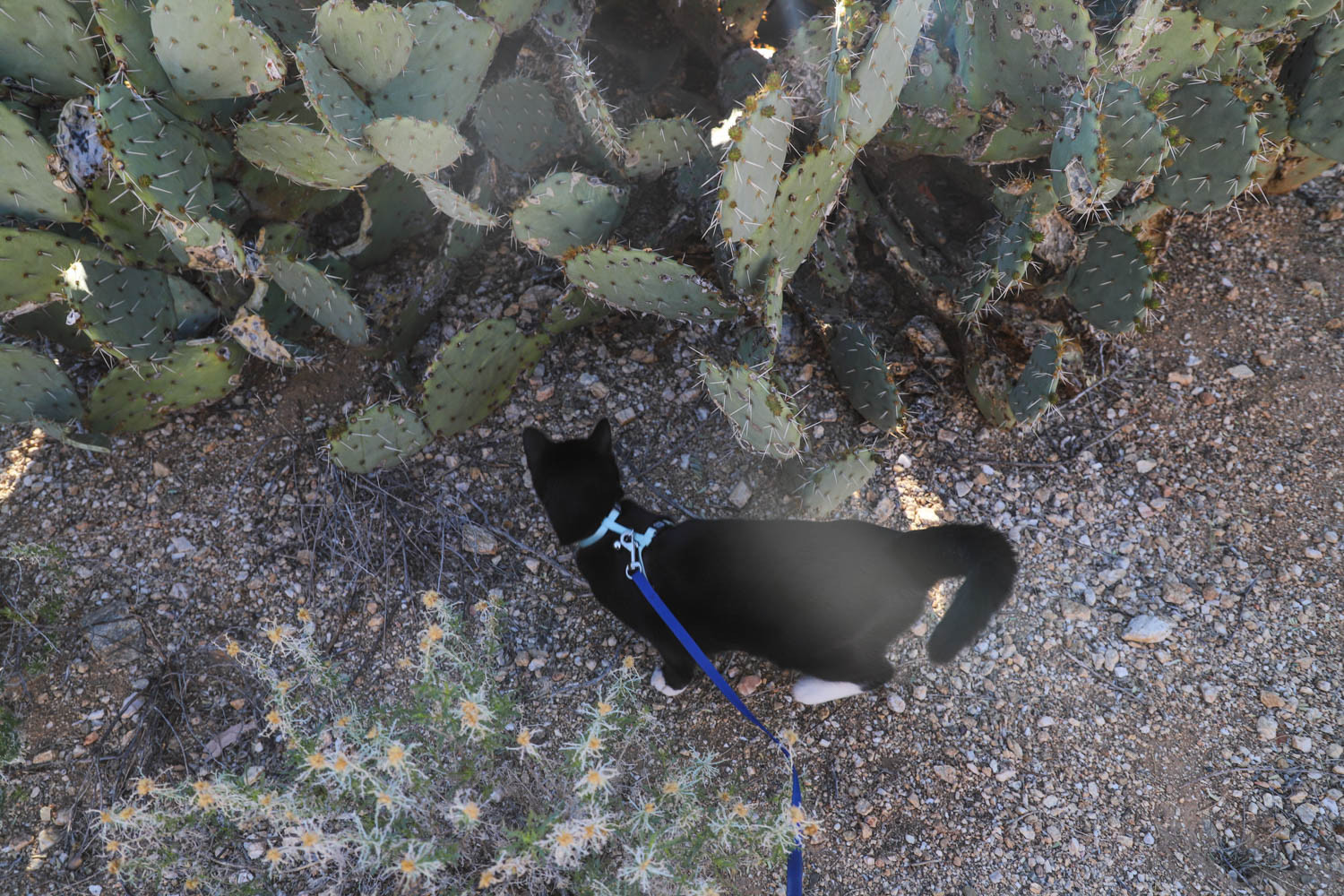 Josie the cat using a portable litter box outdoors
Josie the cat using a portable litter box outdoors
 Josie the cat wearing a harness in a scenic location
Josie the cat wearing a harness in a scenic location
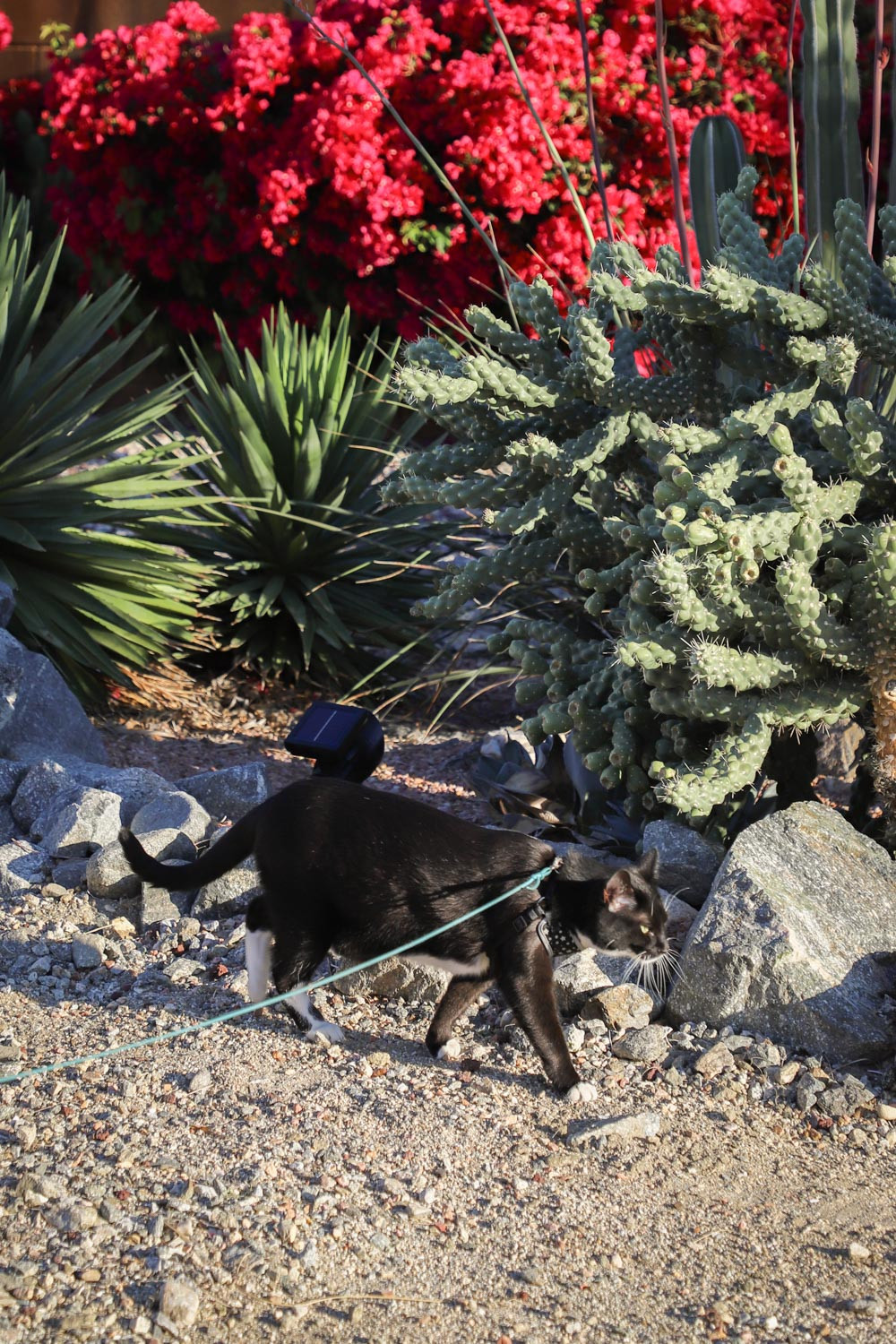 Josie the cat exploring a forest environment
Josie the cat exploring a forest environment
Knowing When to Stay Home: Recognizing Your Cat’s Limits
It’s perfectly acceptable, and sometimes necessary, to leave your cat at home, with a trusted friend, family member, or even at your pet-friendly accommodation after they’ve had time to settle in. There will be times and places that are simply not suitable or safe for your cat. Never leave your cat unattended in a hot or cold vehicle while you are hiking or enjoying a meal. This is not only unsafe but also unkind.
Ultimately, adventuring with a cat is a different experience than traveling without one. Certain travel styles and destinations won’t be cat-compatible, and that’s perfectly fine. They will be there to greet you upon your return, likely with a nap already in progress.
For further resources and practical advice on cat training, travel gear, and inspiring adventure cat stories, AdventureCats.org is an excellent resource. While I am not affiliated with them, I found their website invaluable when I began leash training Josie.
Do you travel with your pet cat? Share your own tips and experiences in the comments below!
